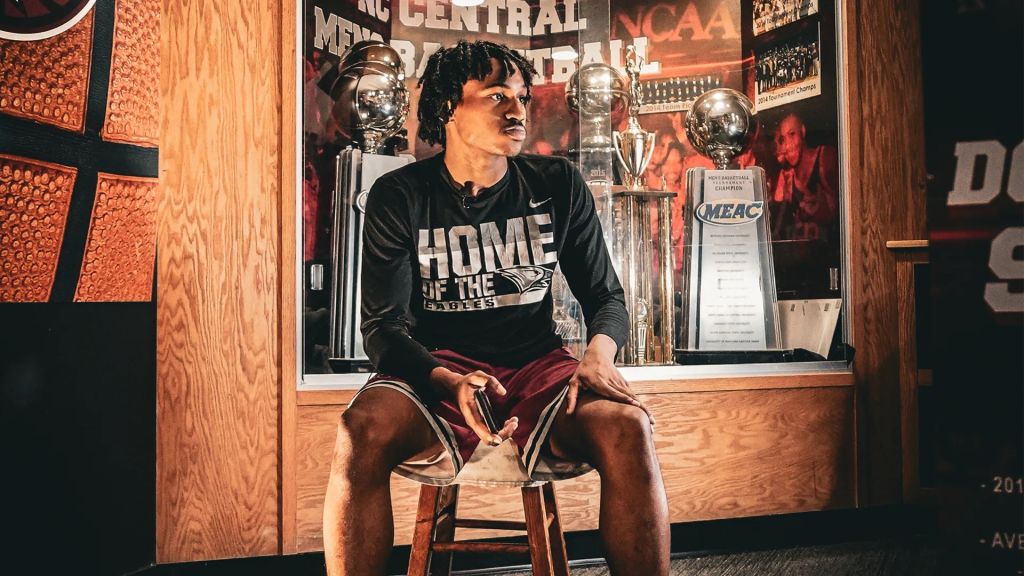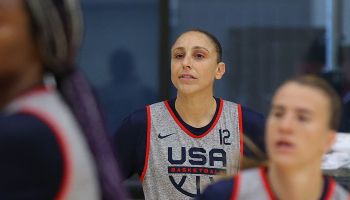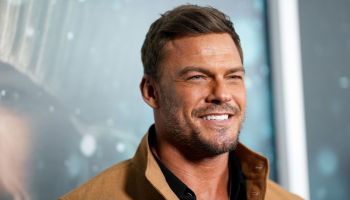
Source: Slaven Vlasic / Getty
Few works of mid-20th century literature capture the sweeping impact of a white supremacist society on Black people’s minds with more visceral intensity than Native Son. Richard Wright’s unsparing chronicle of protagonist Bigger Thomas’ anxious decision-making, as well as its horrific impact on his and his loved ones’ lives, earned immediate acclaim and criticism in equal measure upon its 1940 debut. Wright’s acolyte James Baldwin highlighted the novel’s prescience and shortcomings in a pair of essays from collections that bear Wright’s book’s name.
“Below the surface of this novel there lies, as it seems to me, a continuation of that monstrous legend it was written to destroy,” Baldwin writes, referencing Bigger’s seeming embodiment of the worst caricatures of Black men’s barbaric violence, in “Everybody’s Protest Novel.” Baldwin later regretfully acknowledges in “Alas, Poor Richard” that the prior essay unintentionally hurt his relationship with Wright. “I had mentioned Richard’s ‘Native Son’ at the end of the essay because it was the most important and most celebrated novel of Negro life to have appeared in America,” he honorifically reflects.
These words capture Baldwin and other readers’ sense that the character, while epitomizing the United States’ racist constraints on the Black imagination, did more to perpetuate the country’s hatred of Black masculinity as irreparably violent than it did to subvert it.
Rashid Johnson’s own mother felt a similar distaste for the character when she gave her son a copy of Native Son during his teenage years. “She told me, ‘Well, this is a really complicated novel. I’m not sure if I like Bigger,’” he tells CASSIUS over the phone. “My relationship [with the book] started there, with me wanting to dig into it and see what it was that she thought was so important to read—and, on top of that, what about this character she felt challenged by.”
This quest eventually took Johnson, a prolific multimedia artist with a reputation for art that confronts the common tropes surrounding Black identity, into his first narrative feature film. The native Chicagoan knew he couldn’t do it alone, though, and enlisted Pulitzer Award-winning playwright Suzan-Lori Parks, whose cross-disciplinary works also frequently tackle Black identity under structural racism, adapt the novel’s too-timely themes to contemporary Chicago. “She humbled me, and we talked quite a bit about this story, our own lives and experiences, and she enthusiastically signed on to work with me,” he recalls of their first meeting.
Both Johnson and Parks brought shared experiences into their development of Native Son. For instance, they both saw “that feeling of being both embraced as an insider and, simultaneously, being a little bit different and an outsider” within Bigger.
“He’s really struggling with figuring out where his place is in that grand narrative of human experience,” he notes. “Throughout my experience, both as an artist and a person of color in America, that sense of double conscious, [I’ve had to] explore and have a complicated negotiation with it.”
The movie’s Bigger, played with subdued soulfulness by Moonlight star Ashton Sanders, illuminates this conflict with a punk rock defiance—complete with green hair, awkward irreverence, and the lyrics to Black punk pioneers Death’s “Freakin’ Out” scrawled all over his leather jacket. Johnson relocates this “unexpected archetype” from Wright’s original South Side Chicago setting to the Near North Side where he grew up. This change allowed Parks and Johnson to develop the film’s universe with a nuanced understanding of how radicalized wealth disparity looks in an age where gentrification threatens Black communities’ sense of place at least as much as the racist renting practices that impact the novel’s Black characters.
“We rarely talk about the Black communities on the North Side,” he explains. “They’re kind of sitting there in similar economic positions to folks oftentimes on the South and even West Sides, but their proximity to wealth and access to, for instance, the beaches reserved for wealthier communities—they’re there, seeing it.”
The film also significantly updates the Daltons, the white family whose daughter Bigger accidentally kills while under their employment, to a present understanding of white liberal guilt’s oppressive power. Parks replaced daughter Mary and her boyfriend Jan’s explicit communist leanings with the language of “wokeness” that gives today’s moneyed white liberals the social cache of rebellion without any of the Red Scare stigma. As Bigger’s introduction to Mary and father Henry Dalton demonstrates, the updates demonstrate how white guilt still presses Black conscience into constraining boxes.
“There’s an antagonism in the story, but there isn’t an antagonist,” Johnson explains. “The white characters producing this guilt are all well-meaning folks, for the most part. From that, we’re faced with, ‘What is the antagonism?’ That antagonism’s more systemic, the system that we’re all subject to. It’s hard for us to escape it—both for the victims and the producers [of that antagonism].”
Parks’ screenplay and Sanders’ portrayal also notably softens some of the literary Bigger’s more severe personality traits and actions. Whereas the book shows Bigger contemptuously taking his self-loathing out on his friends, family, and girlfriend Bessie Mears (portrayed with tremendous depth of sympathy and concern by If Beale Street Could Talk breakout star KiKi Layne), the movie infuses him with a self-reflective compassion and affection. The most obvious change that readers of the book will notice, which Johnson and Parks both revealed when the movie premiered at this January’s Sundance Film Festival, involves one of Wright’s most infamous scenes: that in which Bigger, dragging Bessie into his flight from police for smothering Mary, rapes and kills his partner. The book scraps that, as well as Bigger’s reckoning with his actions’ legal and social ramifications, in favor of a scene in which Bigger chokes Bessie for giving up their location before, horrified, he relents and awaits inevitable arrest.
Johnson and Parks previously told USA Today that they made these changes in keeping with the character’s sensitivity and the ongoing public conversations about sexual violence against women. Johnson adds that having included this scene risked erasing the more subtle ways it explores the intersection of structural and interpersonal violence.
“We felt like that level of violence towards a woman, perpetrated by our protagonist, would hijack the story in ways in which the subtleties around race, economics and coming-of-age would all fall to the wayside,” Johnson admits. “In our contemporary dialogue around violence and women, that act would be the only story—and rightfully so. If Bigger were to follow through with that act, there’s nothing else to be discussed.”
The result of all of these creative decisions is a film that forcefully captures the chaos from Bigger’s tragic decisions without any of the empathy for sexist actions our society now increasingly understands as unnecessarily traumatic. Johnson hopes that the film, which HBO made available for subscribers to stream after its television premiere last Saturday, will thus connect with the broadest audience possible—one which might not see it had he taken it to theaters first.
“There were opportunities to take this film in different directions, many of which would have ended with it on screens and downtown, which you can place as any hip, art theater in America that, more often will not, will be the stomping grounds for people of color since they’re usually not in their neighborhoods,” he says. “By making sure we had a partner like HBO, we’re saying that our audience is all the folks: everybody who watches Game of Thrones, True Detective. That’s a huge cross section of America.”
















